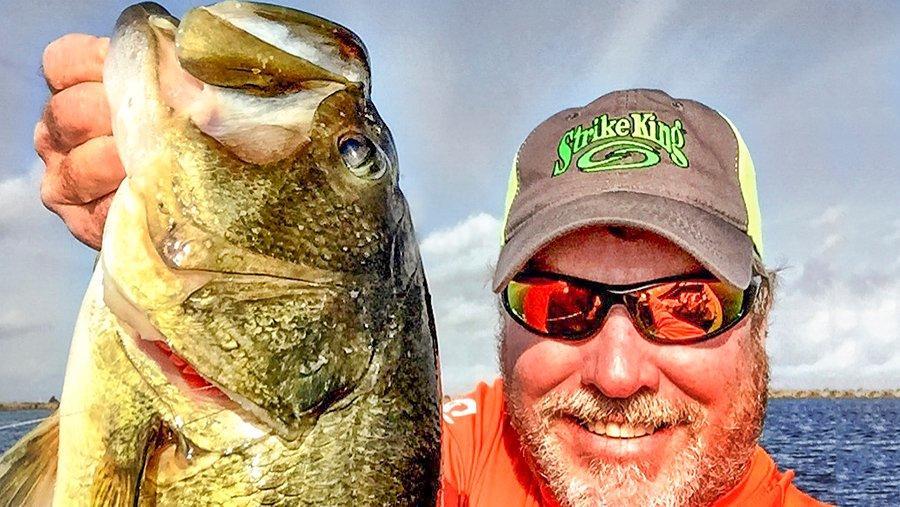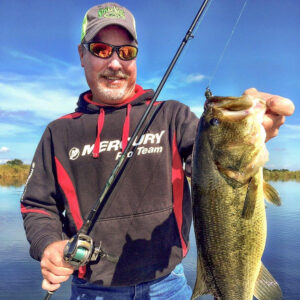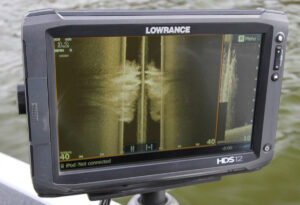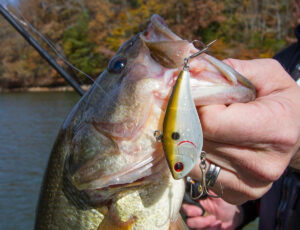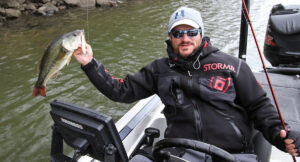We tend to think of winter largemouths tucking inside the heating blanket and hanging the “Do Not Disturb” sign, but the fish are hardly dormant during the winter. In fact, the chilly months can deliver periods of intense action for those who understand what triggers the winter bass bite.
Likening winter aggregations to a less mobile version of summer ledge grouping, Bassmaster Elite Series pro Dennis Tietje said that one of the biggest factors contributing to winter’s lights-out potential is seasonal schooling.
“In the winter, they school up in big wolf packs,” Tietje said. “So if you can locate those big schools, you’ll find they compete for the food and are more aggressive.
“In the winter time, the groups are bigger so there are less of them. They may be harder to find. But there are times when they’ll be so aggressive you literally cannot get your bait to the bottom.”
LIKELY LOCATIONS FOR WINTER BASS
Winter haunts will vary by region and lake type, but here are a few general parameters:
• Look for current breaks. While summer bass use current, winter bass often avoid it.
• Corners are key. Creek channel swings and bends that gather baitfish will not go unnoticed by bass with rumbling bellies.
• Close to deep water. Winter through early spring, bass want proximity to deep water as insurance against cold fronts.
“Those fish aren’t moving 200-300 yards (during cold fronts), they just move up and down in the water column,” Tietje said. They want to stay close to their feeding areas.”
WEATHER
On the flip side, warming trends can trigger pronounced periods of feeding aggression, especially in southern waters where fish respond more sharply to cold weather.
As Tietje points out, significant fluctuations in barometric pressure make this a volatile time of year. Therefore, bass respond enthusiastically to those “feel good” periods.
“Ahead of these weather systems, these fish really feed up,” Tietje said. “Even if the weather is in the upper 40s or low 50’s, you can still tell the difference in the feeding periods.”
Overnight temperatures are especially important this time of year. If you have an extended period of warm or at least stable weather and nights avoid drastic temperature dips, the following days will reflect such energizing consistency.
“If you have cold nights and warmer mornings, the better bite will be in the afternoon. But if you have warmer nights, that bite may be earlier.”
MEALS MATTER
Winter fish are much for roaming, hunting or pretty much anything that requires effort. They want to hold close to forage schools and snag occasional meals, as needed.
“It’s very important to always stay with the bait,” Tietje said. “You’ll find that this time of year, if you don’t have that piece of the puzzle, the fish will leave.
“They will go find another creek bend or another staging place. You may have all the other pieces of the puzzle, but if you’re missing the food, you’ll miss the fish.”
During a mid-January trip on Toledo Bend, Tietje and a fishing buddy found a massive ball of bait and caught 81 bass in one spot. Upon his return the next day, Tietje found the bait had moved and he caught only 5 bass.
Find More Bass with Side Scanning Technology [VIDEO]
IMPACTS OF REACTION BAITS
Complementing the real stuff, winter bass will also display aggressive tendencies toward artificial baits. But often getting a fish to react to something more aggressive can trigger a bite when finesse presentations fail.
Shallow: Swim jigs or lipless crankbaits.
Subtle, fluttering retrieves imitate sluggish and therefore vulnerable baitfish. Here, Tietje values erratic moves over speed.
Mid-depths: Medium-diving crankbaits.
Running down through schools of huddled fish is like a half-time pizza delivery.
“Even though you’re reeling slow, you’re hitting stuff and that crankbait is ricocheting off of it and it looks like a cold, crazy shad and that triggers strikes,” Tietje said.
Deep Water: Spoons.
Jerk, flutter, jerk flutter — this simple cadence does a number on bass hoping for cold-stunned shad.
OTHER OPTIONS TO TRIGGER WINTER BITES
We asked a couple more pros for their winter trigger tips and got these notes:
• Elite pro Hank Cherry aggressively works a bone colored shallow diving jerkbait with a semi-steady retrieve over natural rock and riprap. The presentation mimics squarebill duty, but he says the different bait profile gives the fish a unique look.
“I’ve fished this behind guys throwing squarebills and cleaned up,” Cherry said.
• Upon locating large schools of shad on his graph, FLW Tour pro Jonathan Newton rigs a Zoom Swimming Fluke on a swimbait head and runs it through the buffet. Varying his retrieve based on fish mood, he’ll throw in a dead stick look to spice up the ruse.
“You reel it really fast, kill it; reel it really fast, kill it and let it go to the bottom,” he said. “A lot of times, that’s the trick to catching them.”


